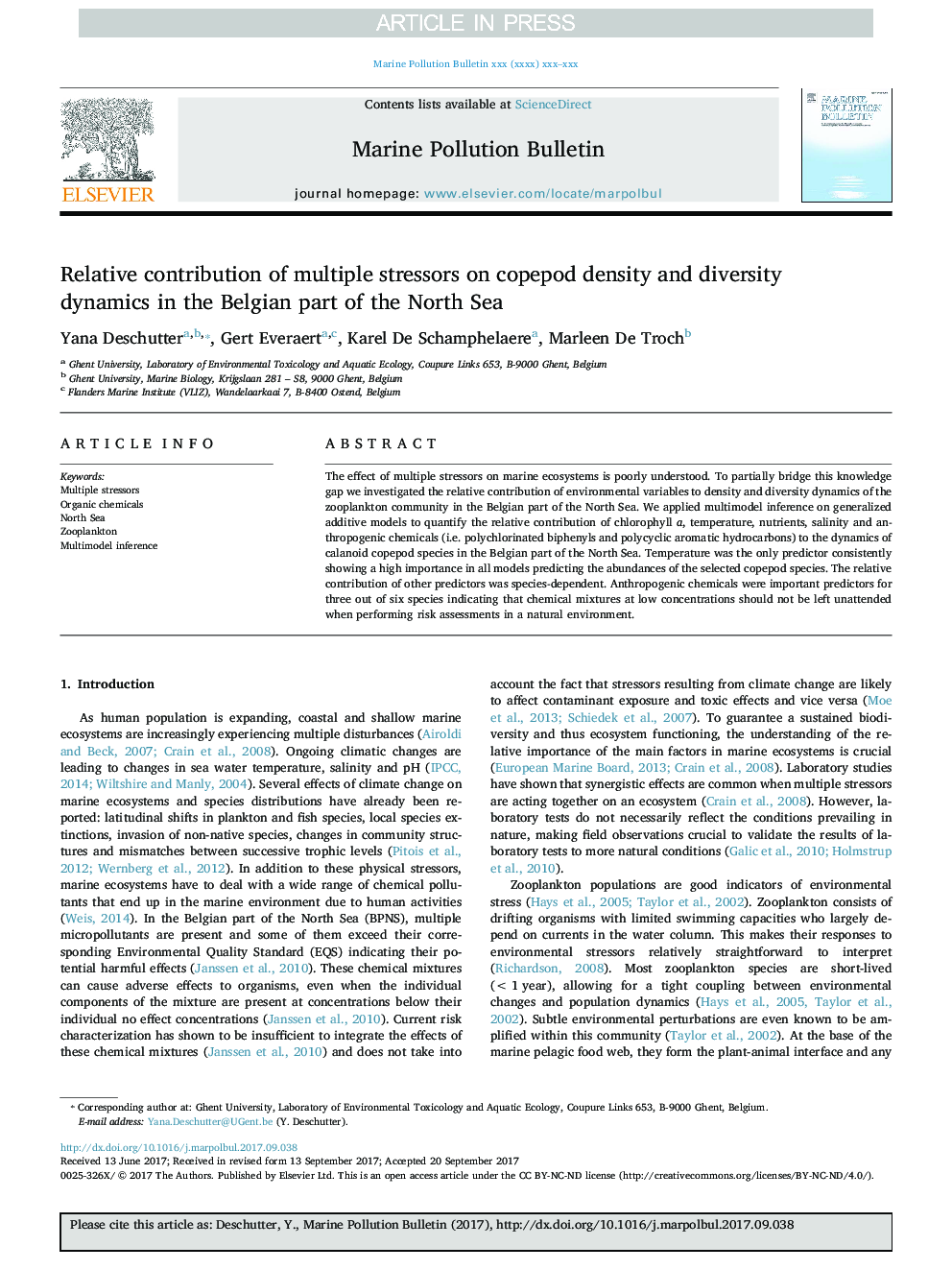| Article ID | Journal | Published Year | Pages | File Type |
|---|---|---|---|---|
| 8871991 | Marine Pollution Bulletin | 2017 | 10 Pages |
Abstract
The effect of multiple stressors on marine ecosystems is poorly understood. To partially bridge this knowledge gap we investigated the relative contribution of environmental variables to density and diversity dynamics of the zooplankton community in the Belgian part of the North Sea. We applied multimodel inference on generalized additive models to quantify the relative contribution of chlorophyll a, temperature, nutrients, salinity and anthropogenic chemicals (i.e. polychlorinated biphenyls and polycyclic aromatic hydrocarbons) to the dynamics of calanoid copepod species in the Belgian part of the North Sea. Temperature was the only predictor consistently showing a high importance in all models predicting the abundances of the selected copepod species. The relative contribution of other predictors was species-dependent. Anthropogenic chemicals were important predictors for three out of six species indicating that chemical mixtures at low concentrations should not be left unattended when performing risk assessments in a natural environment.
Related Topics
Physical Sciences and Engineering
Earth and Planetary Sciences
Oceanography
Authors
Yana Deschutter, Gert Everaert, Karel De Schamphelaere, Marleen De Troch,
